When should you visit Botswana? Are there better times to go on safari? Is there any time you shouldn’t visit?
These are questions we hear all the time, so today, we’re going to break down Botswana’s weather by the month and what that means for you on safari. However, before we get into it, let’s talk about the best time to go on safari in Botswana.
Best Time to go on Safari in Botswana
The best months to safari in Botswana depend on what you want to see, experience, and do. Every month offers something different for visitors, and it’s never really a wrong time to go. Botswana is a year-round destination with 300 days of sunshine and abundant wildlife throughout the year.
However, the weather does change throughout the year with seasons of more substantial rainfall that can impact your game-viewing expectations. So let’s talk about when you should visit Botswana based on your expectations.
High Season: Best Time to See the Animals

This is the time of year to enjoy once-in-a-lifetime animal sightings.
High Season goes from July to October. These four months are considered the best time to visit Botswana if you want to see the animals. Because it’s the dry season, there’s far less vegetation, which means animals have nowhere to hide, making them easier to spot. Also, the limited water means that you can head to concentrations of permanent water, and the animals will mostly come to you. This is also an excellent time for clear skies, no rain, and fewer bugs.
However, it is essential to note that Botswana High Season is also the busy season. You’ll encounter the most tourists during this time, so you may feel a little more crowded during these best months to safari in Botswana. And you’ll need to book early! Many people book up to a year in advance to find a slot during these perfect months.
Shoulder Season: Fewer Crowds & Green Scenery

Beautiful greenery makes the Shoulder-Season a stunning time to visit while still offering amazing wildlife.
If you’re wondering when to visit Botswana when there are fewer people and great weather, Shoulder-Season is fantastic. Made up of four months—November, April, May, and June—this time of year offers great weather, fantastic wildlife viewings, and more affordable pricing. The scenery is relatively green in April and May, which can be excellent for pictures. However, thicker vegetation can mean a harder time seeing the animals.
Rain may also fall in November and April, but you shouldn’t encounter a lot—just a few short thunderstorms. However, the high concentration of water leftover from the wet season may make it hard to get to some areas still, but for the most part, driving conditions are reasonably good. Weather is pretty amazing during the Botswana Shoulder Season, but you could still have some frigid nights, so warm clothes are a must.
Off-Season: Rainy Weather but Low Rates and Lots of Newborns
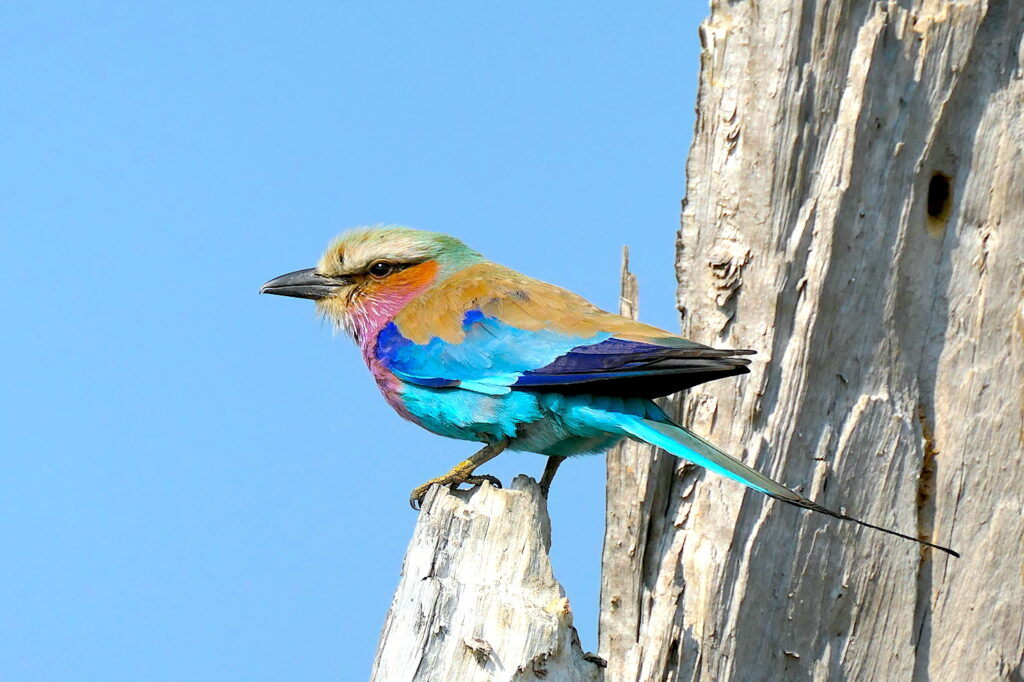
Off-Season is a great time for bird watching. Birds migrate here by the millions during these months.
Off-Season goes from December to March. During these four months, you’re almost guaranteed to encounter rain during your game drives. While the greenery and vegetation are stunning, the abundance of water can make some things difficult. It’s humid and hot, so you could deal with a lot of mosquitoes. You may also have a hard time driving around due to flooding.
However, there are some wonderful things about the Botswana Off Season. These are some great months for bird watching, and in December, January, and February, it’s migration season. In the Kalahari desert (in the south), this is the time to witness the second largest migration in Africa, the zebra migration as well as the pink flamingo migration. In the Okavango Delta, this is the time for newborns, which can also mean high concentrations of predators.
Botswana Safari by the Month
Botswana is a year-round destination with 300 days of sunshine and abundant wildlife throughout the year. However, if you have limited vacation time and only have time off during a particular time of the year, here’s a simple breakdown of when to visit Botswana by the month.
January & February
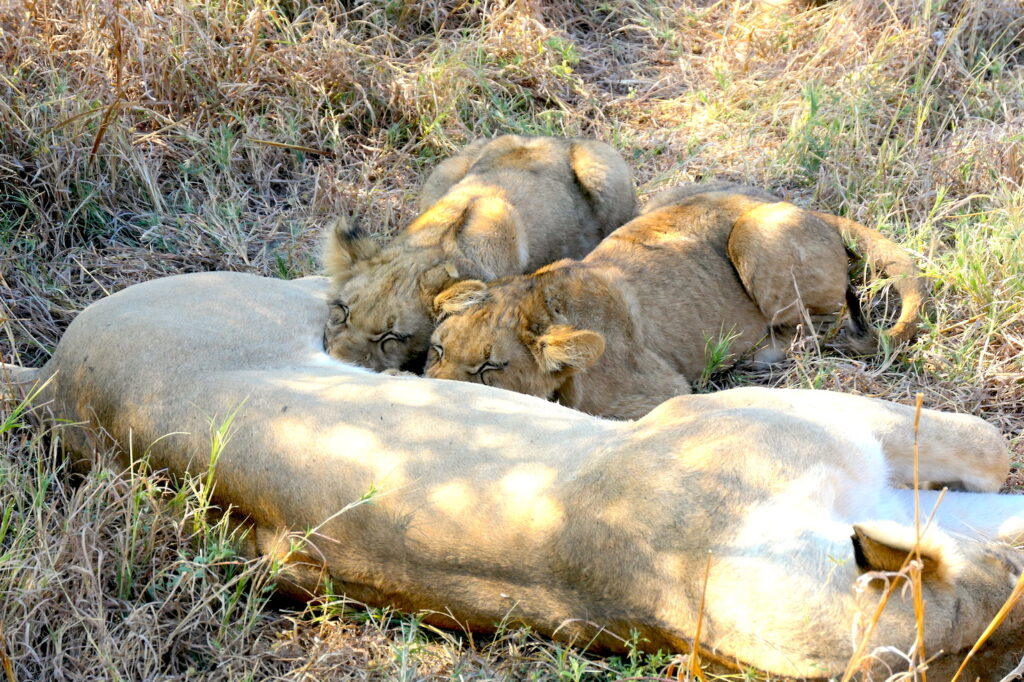
January and February are the two wettest months of the year. This means that you have a very good chance of getting rained on while you’re out on game drives. However, it also means there’s beautiful thick, green vegetation. The scenery will be stunning this time of year. Flowers will be in bloom, trees will be packed with leaves, grass will be growing, and water will be everywhere. Unfortunately, this incredible scenery can hide wildlife because you can’t see as far. It’s also hot and humid. In spite of this, these months are incredible for bird watching, many migrations are in full swing, and many antelope give birth so predators can be abundant.
The good:
- Great time for bird watching.
- Beautiful scenery
- Many migrations are in full swing, including the Botswana zebra migration.
- Antelope birthing seasons, so hunting predators will be in abundance.
- Highly affordable off-season prices.
The bad:
- Lush greenery means that animals have more hiding places.
- Lots of rain could mean wet game drives.
- An abundance of water may make it difficult to get to many areas.
- Hot and humid weather may be uncomfortable for some.
March
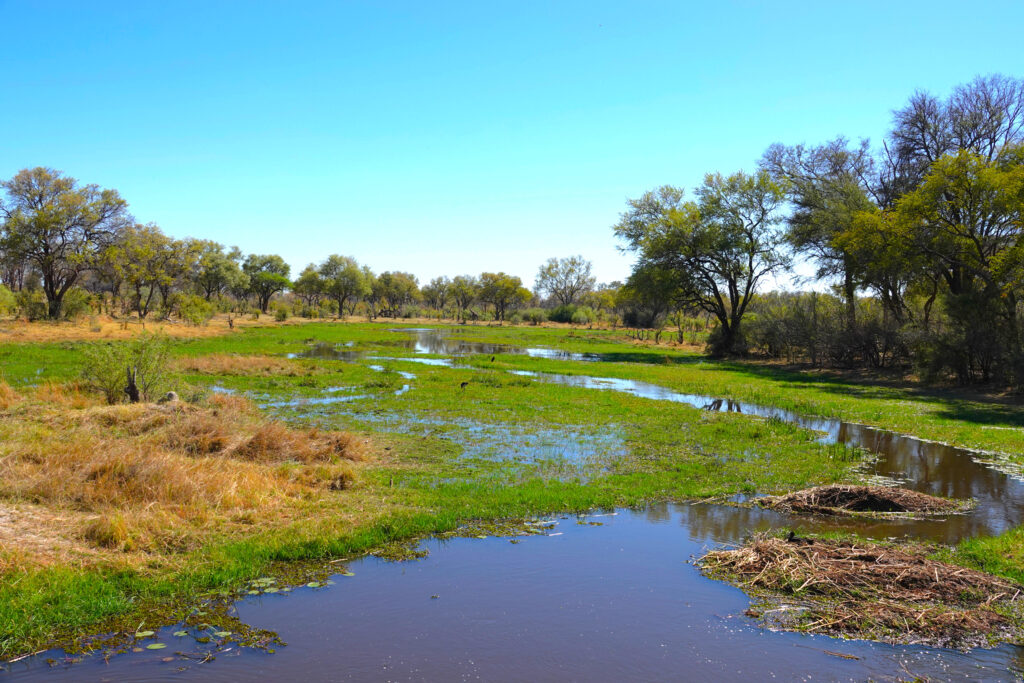
March is when the rains begin to ease. You’re far less likely to be rained on in March, but all the water from January and February has built up, so water is absolutely everywhere. This will be the greenest season and a stunning time to visit Botswana if you want to see the country in full bloom. However, because the water has had so long to build up, getting around can be difficult. You’ll have to find a way to drive between water, and some areas may be inaccessible. But this does mean that you’ll find large concentrations of animals in the accessible dry areas. Unfortunately, this can also be prime mosquito season, so bug spray is a MUST!
The good:
- Because it’s so wet, large concentrations of animals will be found in dry areas.
- The greenest time of the year with lush plants and flowers.
- It’s birthing season for many animals, which could mean lots of happy predators.
- Highly affordable off-season prices.
The bad:
- VERY thick greenery means that animals have more hiding places.
- Flooding may make it difficult to get to certain areas.
- This is a mosquito-heavy season because there’s so much water.
April & May
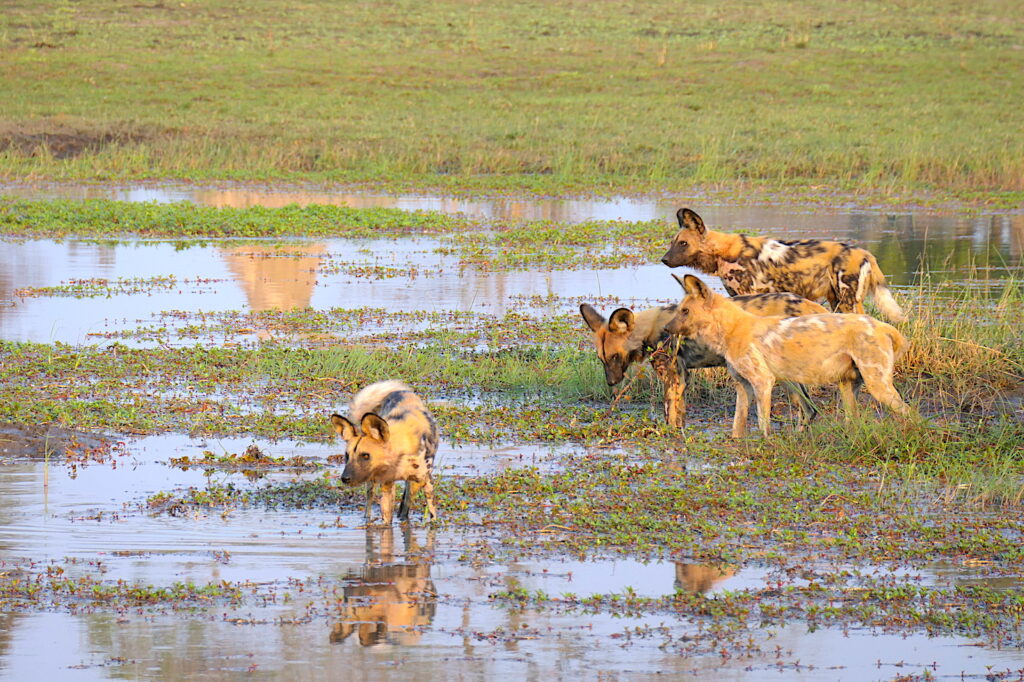
April and May are two amazing months to visit Botswana. Considered shoulder season, this is one of the best times to go on a Botswana safari because it’s more affordable, but the experience is still incredible. The days are warm, the nights are cold, and there’s little chance of rain, which makes it great weather. The landscape is still green because you’ll have just left the wet season, but the water will have already begun to subside. What this means is that you’ll find animals hovering around permanent water sources, and it is before peak season, so visitors are few and prices are more affordable. However, depending on flooding, some activities may be unavailable.
The good:
- Beautiful green scenery, but far less water so you can get around.
- Less busy time of the year with fewer tourists.
- Great weather: warm days and cold nights with very little chance of rain.
- Shoulder season pricing makes these two months more affordable.
The bad:
- This is late fall/early winter so the weather might be a little cold for some people.
- There’s still thick vegetation during this time, so animals may be harder to find/see.
- It’s still mosquito season, and some water-based activities may be unavailable.
June & July
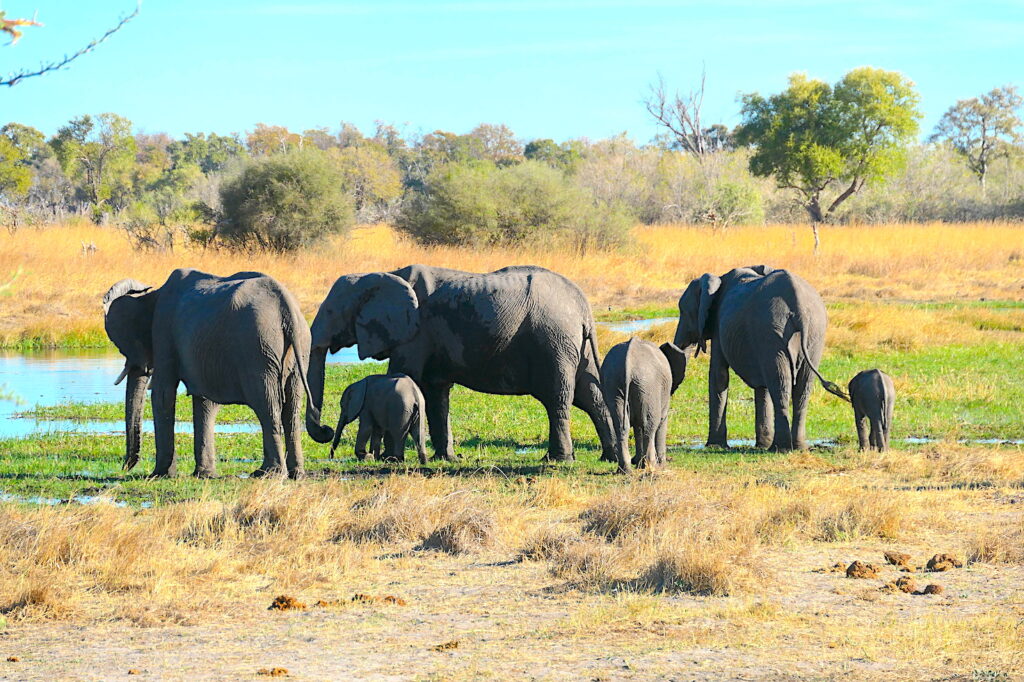
June and July are two months with flawless blue winter skies! High season begins during this time, so available and prices are at a premium. You’ll need to book six to twelve months in advance if you want to ensure your slot with Brave Africa. These are two of the best months to safari in Botswana because the weather isn’t too hot during the day, there’s little to no chance of rain, and as long as you don’t mind cold nights, it’s gorgeous. There are very few mosquitos, and game viewing is exceptional at this time.
The good:
- Great weather with mild daytime temperatures, no rain, and cold nights.
- Incredible wildlife viewing with animals concentrated around water.
- Sparse foliage means that you have the best chance of finding animals
- Less water means very few mosquitoes and open access to almost any area.
The bad:
- Less greenery because the dry season has started.
- Cold nighttime temps sometimes below freezing.
- Parks can begin to get crowded with tourists.
- High season means premium prices and limited availability.
August, September & October

August, September, and October are peak season in Botswana. These three months offer the highest concentration of game! And thinned out vegetation means that the animals will have a difficult time hiding and you can off-road as needed to gain the best viewings. It’s the greatest of the year to see herds of antelope, elephants, and buffalo, especially around watering holes. And this means that predators are in abundance. However, it’s important to note that these three best months to safari in Botswana are hot and dry, which can be uncomfortable. Expect stifling days and sultry nights with lots and lots of sunshine.
If you can handle the heat, this is your chance to see once-in-a-lifetime sightings.
The good:
- Great weather with brilliant blue skies and no rain or humidity.
- The best wildlife viewing with game concentrated around water.
- Very sparse foliage means animals can’t hide.
- Nowhere should be out-of-bounds, and all activities are available.
The bad:
- Very sparse greenery, so not quite as beautiful scenery.
- Hot weather during the day and very dry.
- Parks will be at their highest capacity with tourists.
- High season means premium prices and limited availability.
November/December
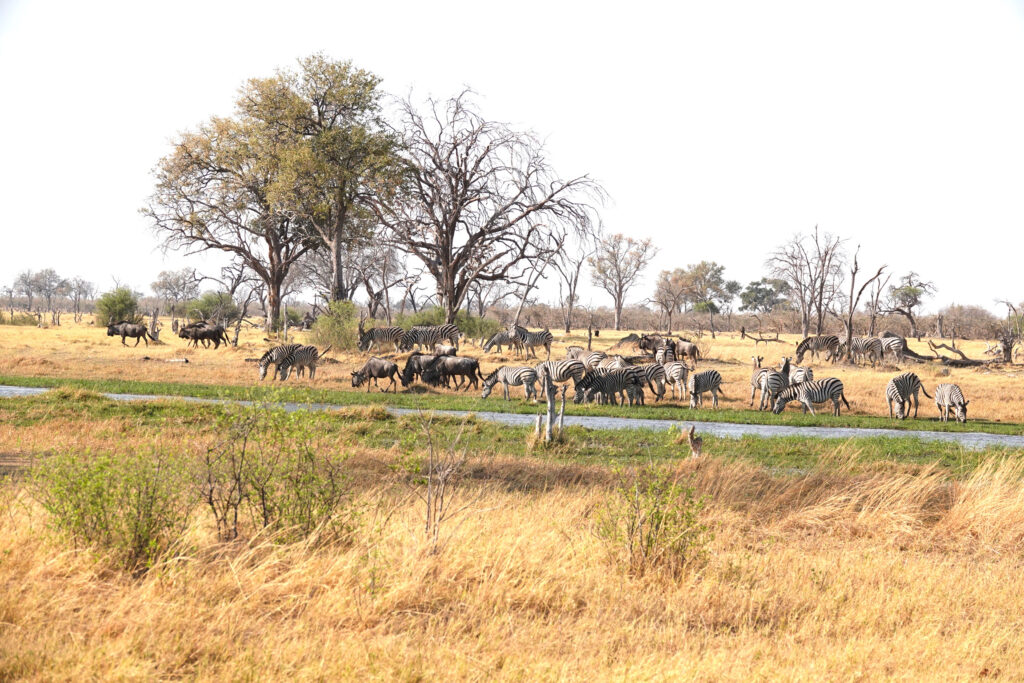
November and December welcome the first rains of the wet season. The weather begins to cool this time of year as the rains start to fall. Some areas will be inaccessible because of mud and heavy rain, but flooding won’t be in abundance, so you should still have lots of chances to get around. This time of year is excellent for newly-born calves and cubs as well as migrant birds and some budding, green scenery.
The good:
- Lots of newly-born calves and cubs.
- The migration season for Zebras and birds (in the millions) begins.
- Start of the green season, which can mean beautiful foliage.
- Shoulder and Off-Season pricing makes these two months more affordable
The bad:
- Hot and humid weather can make game drives uncomfortable.
- There’s a good chance you can be rained on at the start of the wet season.
- Mud and heavy rains may make some areas inaccessible.
When Should You Visit Botswana?
So, when should you visit Botswana? There’s no bad month! If you can go on safari more than once, we recommend coming back during different times of the year so that you can experience Botswana in all of its glory. However, if you only have one chance, we recommend visiting between May and October. These are the peak months and will give you the best chance of once-in-a-lifetime encounters.


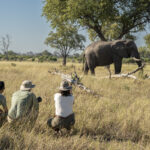
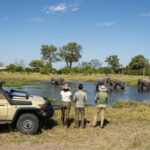
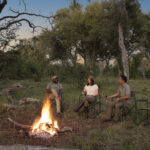
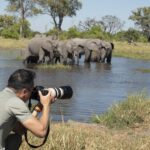
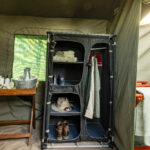
For 2021, we have a choice of traveling to the Delta during the first 3 weeks of November or December, rates aside, which do your recommend? Thanks.
Hi Richard,
For the end of 2021, we would recommend November. It’s a great month. December is when rainy season starts, so in November, you get to avoid most, if not all, chances of rain. Being mid-season, November also still has far fewer tourists than busy-season (July – October), but you still get most of the benefits——good weather, little vegetation, and great animal sightings. Just note that November can still be quite hot (October is the hottest month in Botswana) and so be prepared for some sultry weather. Still, we love November on safari and highly recommend it.
-Kelly (Brave Africa owner)